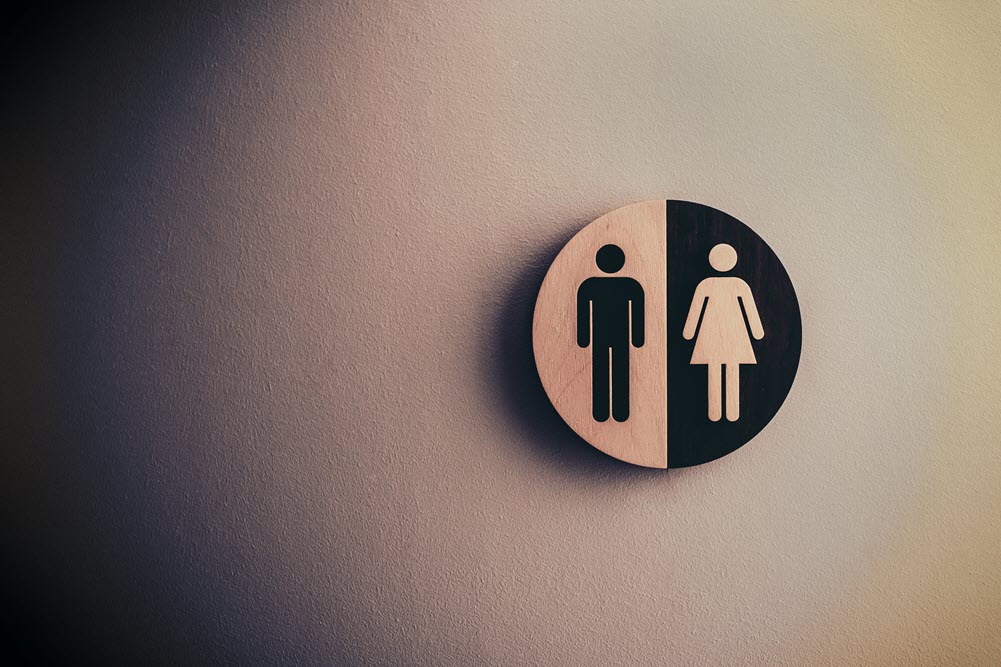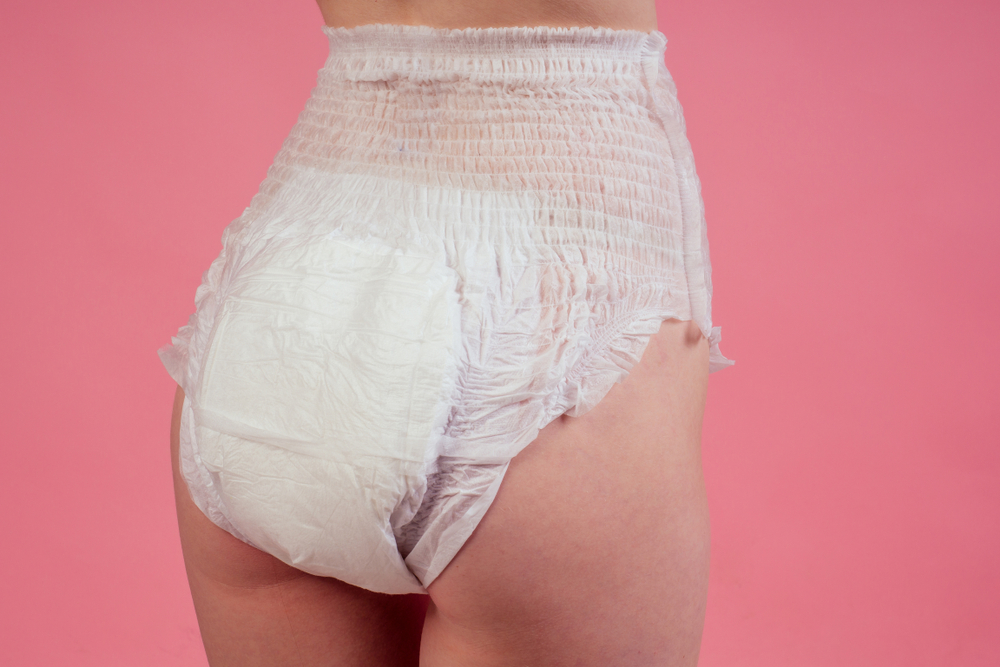
Our discussions on incontinence have highlighted various products and techniques to help families manage incontinence well and respectfully (even for dementia patients).
The topic can be tricky at times. There’s the embarrassment factor, plus the fact that incontinence products vary a lot in their styles and how well they work.
Today, we’re looking at one of the earliest decisions you need to make. Do you focus on disposable briefs or turn to incontinence liners for seniors instead?
To answer that, we need to go beyond the obvious and look at how these two product types work and when each is most powerful.
Incontinence Liners for Seniors

Incontinence liners for women look much like regular period pads and liners, although they’re designed differently. Specifically, products for incontinence will hold more liquid and are much better at dealing with smell.
The products for men follow their own style. They’re often called guards instead and have most of their absorbency up front, which is where it’s needed.
When Do You Use Liners?
Liners are often promoted for light to moderate incontinence.
They’re fantastic, as they’re easy to use and very discreet. Seniors can even still wear their own underwear.
Women also tend to be comfortable with incontinence liners and pads, as they once wore similar products for their periods anyway.
Plus, liners are easy to carry with you and swap out when you need to. The same isn’t true for briefs.
The Limits of Liners
The big problem with incontinence liners is their absorbency. While there are some highly absorbent ones, most don’t measure up to the amount that briefs can absorb.
The smaller size also means that some urine may miss the pad entirely.
Using Briefs Instead

Briefs follow an underwear-like style. Some of them look much like regular underwear (particularly if you choose low absorbency reusable incontinence briefs). However, many look like giant diapers instead.
Some companies do try to make their products look appealing, like by printing patterns on them. Honestly, though, there’s only so much you can do.
When Do You Use Briefs?
Incontinence briefs are normally used for more severe incontinence and for seniors with both urinary and bowel incontinence.
Their larger size and design makes briefs much better at holding urine and catching leaks. This is particularly important at night, as seniors may be lying on their side for some of the time.
For seniors with severe incontinence, briefs may be the only viable option. Liners simply won’t capture enough urine to be useful.
The Limits of Briefs
Incontinence briefs are much larger than liners, which makes them less discreet. Some even look and feel much like wearing a diaper (although, thankfully, many others don’t).
Seniors who are embarrassed about incontinence may find briefs hard to use, especially at first.
Some caregivers choose their phrasing carefully to help get round this issue, such as calling these products briefs or underwear, rather than diapers. However, many seniors still need time to adjust to the idea.
The other issue is getting the briefs on.
Many brands have fast pull tabs, which make the briefs easy to remove. But, getting a new pair on is another story – and often involves removing the senior’s pants and shoes. That’s tough to do if they’re resistant. It’s also no fun if you’re in a public bathroom and need to do a quick change.
There’s another way though, as shown in the video below.
The technique is a little tricky at first, although it does get easier. With practice, this can become a fast and surprisingly simple way to change the briefs.
How To Use Briefs or Liners Well
Choosing between briefs and incontinence liners for seniors isn’t the whole story. There are a few other things to think about, to make sure the products work as they should.
Choose The Right Absorbency
First, absorbency.
Many people choose a lower absorbency than they need, which quickly leads to leakage.
This may be because incontinence is embarrassing, so many of us lowball it when we try to guess the absorbency we need.
You can’t really trust the information incontinence packets either. They’re always estimates and often not very good estimates. Plus, if you lose a lot of urine fast (like with urge incontinence), you’re going to need much more absorbency than you’d expect.
To get around this, it’s best to overestimate. Start with more absorbency than you think you need and see how the product works. You can always drop down to a lower absorbance level later.
One reader at Kapok suggested using something with double the absorption capacity of your bladder. While this might seem a touch extreme, the estimation works well if you’re losing a lot of urine quickly.
Experiment With Sizes, Absorbencies, and Brands
The best way to find the right incontinence products is to experiment.
That’s frustrating, I know, as it can mean going through multiple brands and styles, and dealing with some messy accidents along the way.
This is largely unavoidable though, as we’re all so different from each other.
Experimenting is even more important if the senior is resistant to using incontinence underwear, as they may only be willing to wear certain styles.
Don’t Double Up
Rather than increasing the absorbency level, many people buy two incontinence products and double them up.
For example, some caregivers put two pairs of incontinence briefs on the senior to reduce the risk of urine leakage overnight. Or, you might include a liner in a pair of briefs for extra absorbency.
This rarely works.
Remember, these products are designed to prevent spills and have waterproof backings. This means that urine isn’t going to seep through one pair of briefs into the next. Any excess urine is likely to go out the sides instead, leaving the second pair of briefs completely dry.
Even using a liner in briefs comes with issues, as the waterproof backing can stop the urine from reaching some of the absorbent underwear. The urine often ends up going out the leg holes instead, resulting in leaks.
Some caregivers get around this issue by slashing the back of the first pair of briefs or the line. Doing so breaks the waterproof lining and should allow urine to pass from one pair to the next. While this approach works to a degree, it’s not ideal. The waterproof backing can still cause issues. You’re also creating extra work by cutting the back each time.
Combine The Right Products
Rather than using two briefs or a brief and a liner, look for products that are designed to go together.
For example:
- You might use a pair of disposable or reusable briefs, plus a booster pad. Booster pads are similar to incontinence liners, but they’re designed to allow liquid to easily pass through.
- Men might also use something like a penile clamp, plus a guard, where the guard acts as a backup.
- You could also pair briefs with waterproof outer pants. This approach is much more effective at preventing spillage than layering briefs overtop of each other.
- For the night time, you might use briefs, outer pants, plus a waterproof undersheet for the bed. The undersheet means that any spillage doesn’t end up soaking the mattress.
- Don’t forget about the legs either. Protective underwear or briefs with leg guards can reduce the risk of urine leaking out overnight.
If you’re confused, check out the advice from the manufacturer. Most companies will make it clear which products are designed to be used together.
Change Them as Soon as Possible
Incontinence products wick moisture away from the skin, so seniors can wear them for a while before they’re changed. Still, it’s best to change them as soon as you can.
This could even mean four or five changes per day (which is one reason to consider reusable incontinence products rather than disposable ones). The longer a senior sits in damp underwear, the greater the risk of rashes and skin breakdown.
Don’t Use Them Constantly
Finally, our bodies need the chance to ‘breathe’. The constant use of incontinence products prevents this, as there’s very little airflow.
This means it’s important to have some periods where the senior isn’t wearing incontinence products. Otherwise, the risk of rashes and infections increases dramatically.
This might be at home, where the risk of accidents is low (and cleanup is always easier).
Final Thoughts
For the most part, seniors with light bladder incontinence tend to use liners/pads, while those with heavy incontinence turn to briefs instead. However, active seniors and those who are self-conscious may prefer liners for senior incontinence instead. This way the pad can be quickly changed. Plus, if the pad is positioned well and has the right absorbency, you can avoid most urine leakage.
Feeling Overwhelmed?
Check out our Caregiving Consulting service for personalized support and guidance.

Leave a Reply